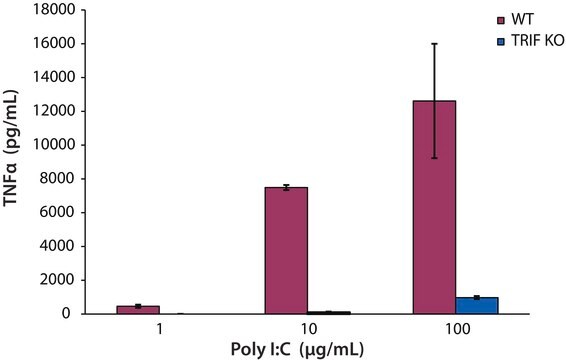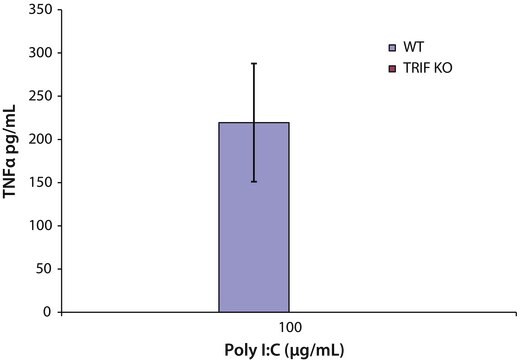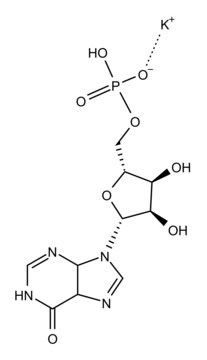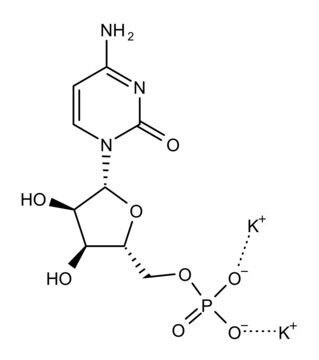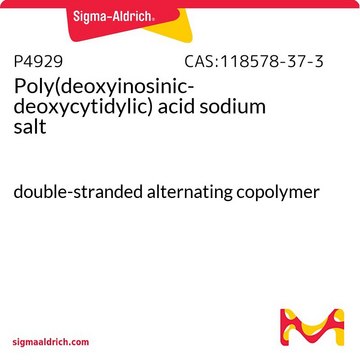528906
Polyinosinic Acid • Polycytidylic Acid, Sodium Salt, Double-Stranded
Known to induce interferon production. Hypochromicity: ≥40% at 248 nm. Extinction coefficient = 5000 M-1cm-1 at 260 nm, pH 7.0.
Sinonimo/i:
Polyinosinic Acid • Polycytidylic Acid, Sodium Salt, Double-Stranded, Poly I • poly C, Na
Autenticatiper visualizzare i prezzi riservati alla tua organizzazione & contrattuali
About This Item
Prodotti consigliati
Livello qualitativo
Saggio
≥99% (TLC)
Stato
powder
Produttore/marchio commerciale
Calbiochem®
Condizioni di stoccaggio
OK to freeze
Colore
white
Solubilità
aqueous buffer: 10 mg/mL
water: soluble
Condizioni di spedizione
ambient
Temperatura di conservazione
−20°C
Descrizione generale
Hypochromicity: ≥40% at 248 nm.
Known to induce interferon production.
Applicazioni
- Penaeus monodon Interferon Regulatory Factor (PmIRF) Activates IFNs and Antimicrobial Peptide Expression via a STING-Dependent DNA Sensing Pathway.: This study explores the role of PmIRF in shrimp immune responses, specifically how it activates interferons and antimicrobial peptides through the STING-dependent DNA sensing pathway, enhancing antiviral defenses. (Soponpong et al., 2021).
- Identification, expression profiling of a grass carp TLR8 and its inhibition leading to the resistance to reovirus in CIK cells.: This article focuses on the TLR8 receptor in grass carp, its expression profiles, and how its inhibition confers resistance to reovirus in fish cell lines, providing insights into antiviral immunity in aquatic species. (Chen et al., 2013).
- Identification and expression profiles of ADAR1 gene, responsible for RNA editing, in responses to dsRNA and GCRV challenge in grass carp (Ctenopharyngodon idella).: The study examines the ADAR1 gene involved in RNA editing in grass carp, highlighting its response to double-stranded RNA and grass carp reovirus, shedding light on fish immune mechanisms. (Yang et al., 2012).
- Immune activation and target organ damage are consequences of hydrodynamic treatment but not delivery of naked siRNAs in mice.: This research differentiates the effects of hydrodynamic treatment and naked siRNA delivery in mice, showing that immune activation and organ damage are associated with the treatment method rather than the siRNAs themselves. (Rácz et al., 2011).
Attenzione
Toxicity: Standard Handling (A)
Ricostituzione
Following reconstitution, aliquot and freeze (-20°C). Stock solutions are stable for up to 6 months at -20°C.
Note legali
CALBIOCHEM is a registered trademark of Merck KGaA, Darmstadt, Germany
Codice della classe di stoccaggio
11 - Combustible Solids
Classe di pericolosità dell'acqua (WGK)
WGK 3
Punto d’infiammabilità (°F)
Not applicable
Punto d’infiammabilità (°C)
Not applicable
Certificati d'analisi (COA)
Cerca il Certificati d'analisi (COA) digitando il numero di lotto/batch corrispondente. I numeri di lotto o di batch sono stampati sull'etichetta dei prodotti dopo la parola ‘Lotto’ o ‘Batch’.
Possiedi già questo prodotto?
I documenti relativi ai prodotti acquistati recentemente sono disponibili nell’Archivio dei documenti.
I clienti hanno visto anche
Il team dei nostri ricercatori vanta grande esperienza in tutte le aree della ricerca quali Life Science, scienza dei materiali, sintesi chimica, cromatografia, discipline analitiche, ecc..
Contatta l'Assistenza Tecnica.